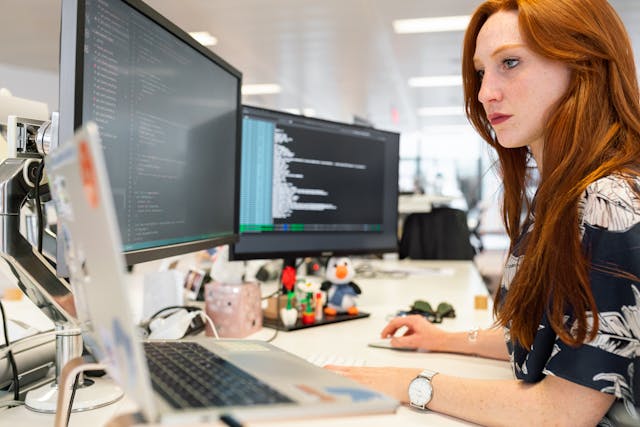Capture Images & Video in the Flutter App
August 29, 2024


Add Dependencies
First, add the image_picker package to your pubspec.yaml file:
dependencies:
flutter:
sdk: flutter
image_picker: ^0.8.7+4
Then, run flutter pub get to install the package.
Update Android and iOS Configuration
Android
In your android/app/src/main/AndroidManifest.xml, add the following permissions:
<uses-permission android:name=”android.permission.CAMERA”/> <uses-permission android:name=”android.permission.WRITE_EXTERNAL_STORAGE”/> <uses-permission android:name=”android.permission.READ_EXTERNAL_STORAGE”/>
iOS
In your ios/Runner/Info.plist, add the following keys:
<key>NSCameraUsageDescription</key> <string>We need camera access to take pictures and videos</string> <key>NSMicrophoneUsageDescription</key> <string>We need microphone access to record videos</string> <key>NSPhotoLibraryUsageDescription</key> <string>We need photo library access to save pictures and videos</string>
3. Create the Flutter App
Here’s a basic Flutter app that allows you to capture images and videos:
import ‘dart:io’;
import ‘package:flutter/material.dart’;
import ‘package:image_picker/image_picker.dart’;
void main() {
runApp(MyApp());
}
class MyApp extends StatelessWidget {
@override
Widget build(BuildContext context) {
return MaterialApp(
home: CaptureScreen(),
);
}
}
class CaptureScreen extends StatefulWidget {
@override
_CaptureScreenState createState() => _CaptureScreenState();
}
class _CaptureScreenState extends State {
File? _image;
File? _video;
final ImagePicker _picker = ImagePicker();
Future _captureImage() async {
final XFile? pickedFile = await _picker.pickImage(source: ImageSource.camera);
if (pickedFile != null) {
setState(() {
_image = File(pickedFile.path);
});
}
}
Future _captureVideo() async {
final XFile? pickedFile = await _picker.pickVideo(source: ImageSource.camera);
if (pickedFile != null) {
setState(() {
_video = File(pickedFile.path);
});
}
}
@override
Widget build(BuildContext context) {
return Scaffold(
appBar: AppBar(
title: Text(‘Capture Image/Video’),
),
body: Center(
child: Column(
mainAxisAlignment: MainAxisAlignment.center,
children: _image != null ? Image.file(_image!) : Text(‘No image selected.’), SizedBox(height: 20), _video != null ? Text(‘Video captured: ${_video!.path}’) : Text(‘No video selected.’), SizedBox(height: 20), ElevatedButton( onPressed: _captureImage, child: Text(‘Capture Image’), ), ElevatedButton( onPressed: _captureVideo, child: Text(‘Capture Video’), ), ,
),
),
);
}
}
Run the Application
Run the app using flutter run. You should see two buttons to capture an image and video. Once captured, the image will be displayed, and the video path will be shown on the screen.
This is a basic implementation. You can extend it to handle additional features like saving the captured media to a specific location, handling permissions more gracefully, or adding UI improvements.